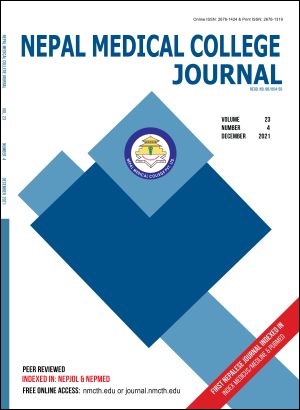Prevalence of Post-Traumatic Stress Disorder and its Associated Factors among Nepali Army Service Members and Veterans: 15 Years Post Insurgency
DOI:
https://doi.org/10.3126/nmcj.v23i4.42208Keywords:
Mental Health, Insurgency, Post Traumatic Stress Disorder, Combat Exposure, CombatantsAbstract
Globally, mental health problems constitute a serious public health problem, contributing 14 % to the global burden of disease. The aim of this epidemiological study was to identify prevalence rates of post-traumatic stress disorder (PTSD), factors associated and its relationship with combat exposure in a post-insurgency period in Nepali army personnel and Veterans. This cross-sectional study was conducted among 300 adults in 2021. In the study both quantitative and qualitative mixed approach with descriptive design was followed. The outcome measures used in the study were locally validated with PCL-M and combat exposure scale. Of the sample, 9 % met threshold for PTSD. The association of variable in reference to age, rank, education and service years with PTSD showed that Age group and Education in current study did not show significant association. However, PTSD with years of service and rank showed significant association. The study also showed a significant relationship between combat exposure and PTSD. There is a significant association between different level of education and combat exposure as well. Overall, the prevalence rates of PTSD in the sample are comparable to other studies conducted with populations affected by conflict and with refugees. However, the findings underscore the need to address the current mental health care awareness and resources in combatants who were exposed to traumatic events during combat in insurgency period. Traumatic exposure predicted increase in PTSD.
Downloads
Downloads
Published
How to Cite
Issue
Section
License
Copyright (c) 2021 Nepal Medical College Journal

This work is licensed under a Creative Commons Attribution 4.0 International License.
This license enables reusers to distribute, remix, adapt, and build upon the material in any medium or format, so long as attribution is given to the creator. The license allows for commercial use.




